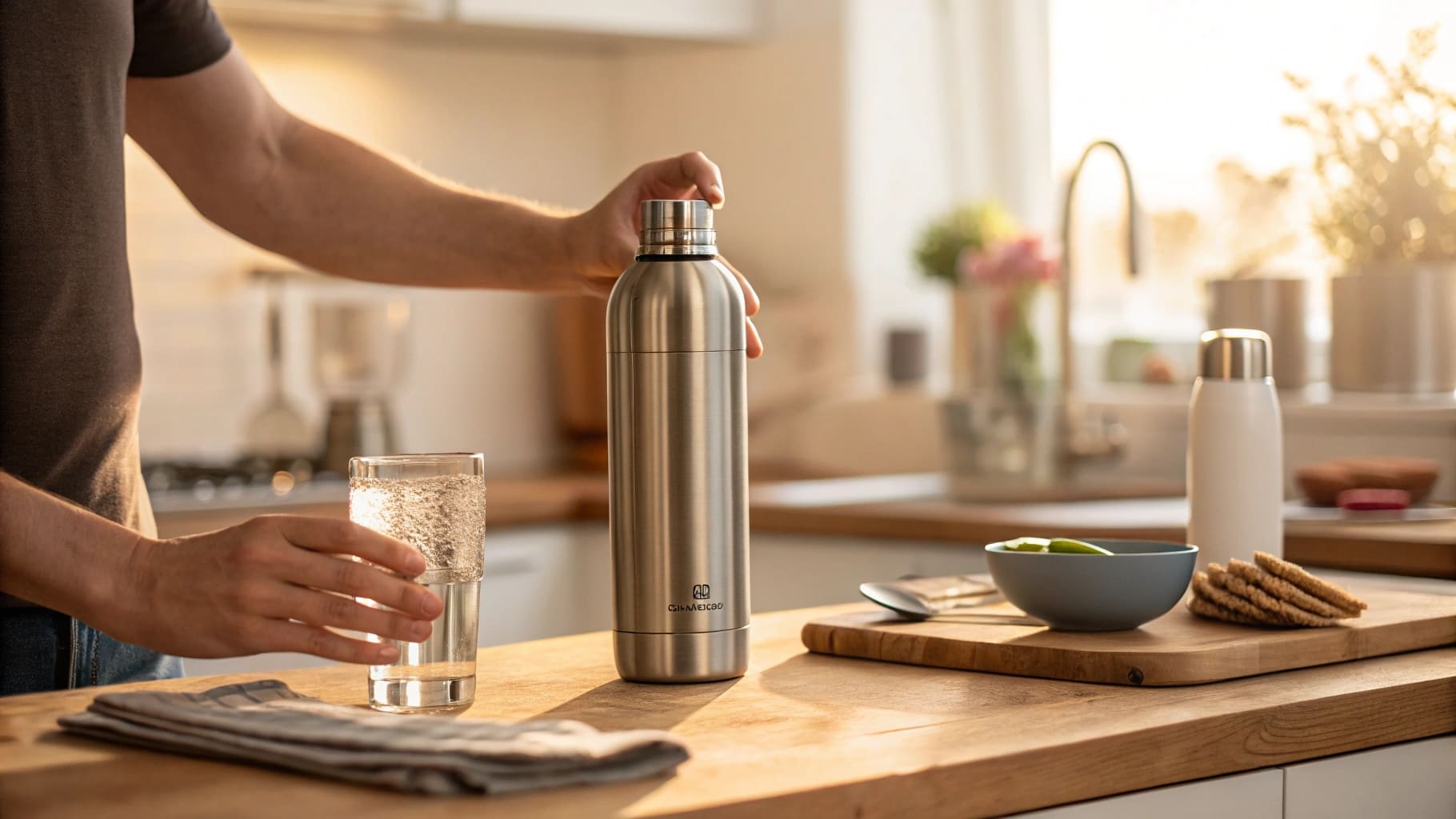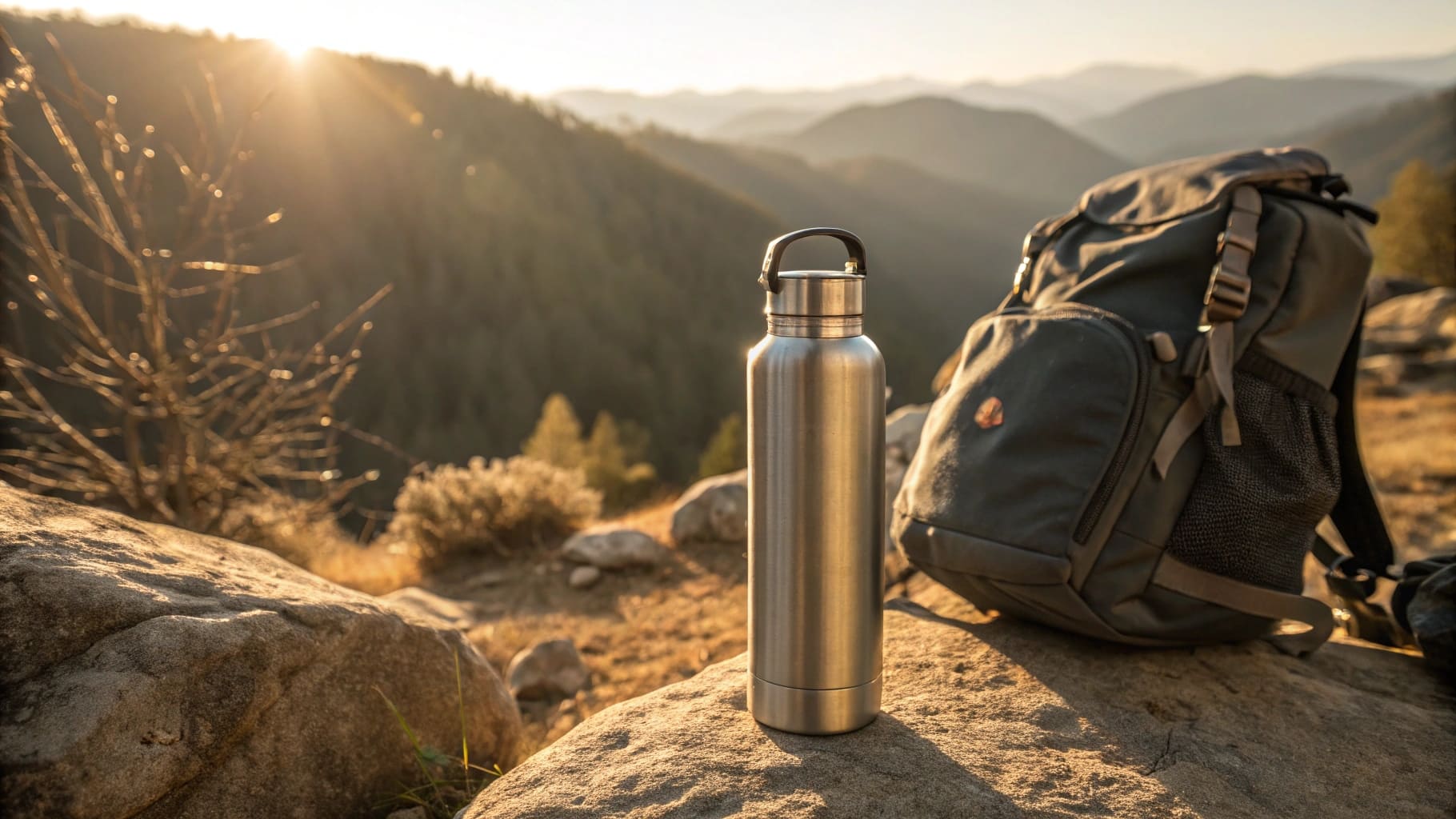Tired of bulky bottles hogging luggage space? Need a hydration solution that packs small? This could be your answer.
Yes, for many travelers, collapsible water bottles are a top space-saver. They compress significantly when empty, freeing up valuable room in your bag.

This sounds great, right? But before you decide if they are the perfect fit for your travel style or for your business if you're looking to stock them, let's explore a bit more. There's always more to consider than just size.
Are collapsible water bottles worth it for travel?
Wondering if a collapsible bottle is a smart buy for trips? Is the space saved truly worth the investment and any trade-offs?
Collapsible bottles are worth it if maximum packability is your main goal. They're great for light packers, but consider potential downsides like less insulation.

When I talk to clients like Mark Shenng, a company owner from Canada, he's always balancing quality and price. He buys our Icobottle stainless steel water bottles, but the travel market has unique demands. So, are collapsible bottles1 a good deal for his customers or for your business targeting travelers?
Let's break it down.
The Big Win: Space
The main advantage is obvious: they save a lot of space. When your bottle is empty, you can make it much smaller. This is great for people who only take carry-on bags or want to pack very light. They are also usually very lightweight. As I mentioned in my insights when we started, this unmatched space efficiency is a major selling point.
What to Consider: The Trade-offs
But, there are things you give up for that space. Here's a quick comparison:
| Feature | Collapsible Bottle (Typical) | Rigid Stainless Steel Bottle |
|---|---|---|
| Space Saving | Excellent (when empty) | Poor |
| Insulation | Poor to None | Good to Excellent |
| Durability | Moderate (can puncture) | High |
| Cleaning | Can be tricky (folds) | Easier |
| Weight | Very Light | Heavier |
| Flavor Impact | Possible (some materials) | Minimal (if any) |
So, for your B2B customers, or if you're a procurement officer yourself, consider this: if the end-users absolutely prioritize saving space and packing light above all else, then yes, collapsible bottles are worth it. It's about matching the product to the right traveler. For instance, someone going on a multi-day trek where every gram counts might prefer it over an insulated but heavier bottle. This means positioning collapsible bottles for that specific traveler segment.
How does a collapsible water bottle work?
Ever seen a bottle shrink before your eyes? Curious about the clever design behind these space-saving wonders? Let's uncover the magic.
Collapsible bottles work using flexible, food-grade materials like silicone or TPU. They either fold, roll, or compress down to a small size when empty.

It's not magic, but clever engineering! The secret is in the material and the design. As I mentioned, we at Icobottle mainly focus on stainless steel, but I've studied these alternatives to understand the market. These bottles are designed to be compact.
Key Materials
Most collapsible bottles use:
- Food-Grade Silicone: This is very popular. It's flexible, durable enough for many uses, and can withstand a range of temperatures. It's also generally non-toxic and BPA-free. The quality of silicone can vary, so this is a key point for B2B buyers.
- TPU (Thermoplastic Polyurethane): This is another flexible plastic. It's often used for hydration bladders and some types of collapsible bottles. It can be very strong and abrasion-resistant, also usually BPA-free.
Common Mechanisms
How do they get so small?
- Folding: Some bottles are designed with thinner sections or concertina-like (accordion) folds. These allow them to collapse flat or into a smaller cylinder.
- Rolling: Other bottles are like a soft pouch. When empty, you can roll them up tightly, much like a sleeping bag. Then you can secure them with a built-in strap or clip.
- Compressing: Some have a more rigid top and bottom. The body is very soft and pliable, so it can be squished down.
From a B2B perspective, if you're considering sourcing these, the quality of the silicone or TPU is vital. You need to ensure it's truly food-grade and durable enough for repeated collapsing and expanding. The design of the collapsing mechanism also impacts usability and longevity for the end-user.
How does the upside down water bottle trick work?
Heard about the upside-down water bottle trick? Does it actually do anything useful, especially when you're on the go? Let's investigate.
The upside-down trick usually tests for leaks. You fill the bottle, close it, turn it over, and check if any water escapes.

This "trick" isn't specific to collapsible bottles, but it’s a good habit for any water bottle user, especially travelers. I often tell my clients who buy our Icobottle stainless steel flasks to check seals, and the same applies here. It's a simple way to prevent messes.
What is the Trick?
It's very simple to do:
- Fill your bottle with some water. Don't fill it completely if you're just testing.
- Secure the lid tightly. Make sure it's properly threaded and closed.
- Turn the bottle completely upside down. Hold it over a sink or outside at first.
- Watch for any drips or leaks around the cap or any seals.
Why It's Important for Travelers (and Collapsible Bottles)
For travelers, a leaky bottle in a bag is a disaster. Electronics can get ruined. Clothes get wet and can even mildew if not dried quickly. With collapsible bottles, because they are often squeezed or packed tightly in luggage, ensuring the seal is perfect is even more critical. The flexible nature of the bottle body means pressure can be exerted on the lid area, potentially causing leaks if the seal isn't top-notch.
For B2B buyers like Mark, who is very quality-conscious, this points to the importance of:
- Lid Design: Is the thread secure? Is the sealing gasket (like a silicone ring) robust and correctly seated?
- Material Quality: Does the material around the lid area maintain its shape and integrity when the bottle is full and potentially squeezed?
- Quality Control: When sourcing these bottles, ask your suppliers about their leak testing procedures. It’s a simple test, but it can save a lot of headaches for the end-user and protect your brand's reputation.
Conclusion
Collapsible bottles offer great space-saving for travelers. Consider material, durability, and cleaning. Choose based on your primary travel needs or your customers' priorities.
-
Explore this link to understand the benefits and drawbacks of collapsible bottles for travel, helping you make an informed decision. ↩

